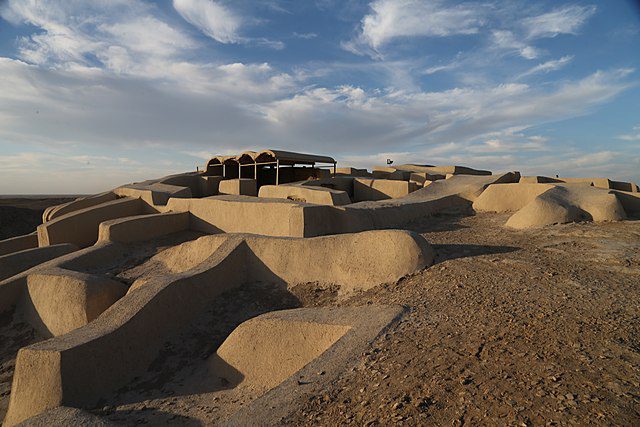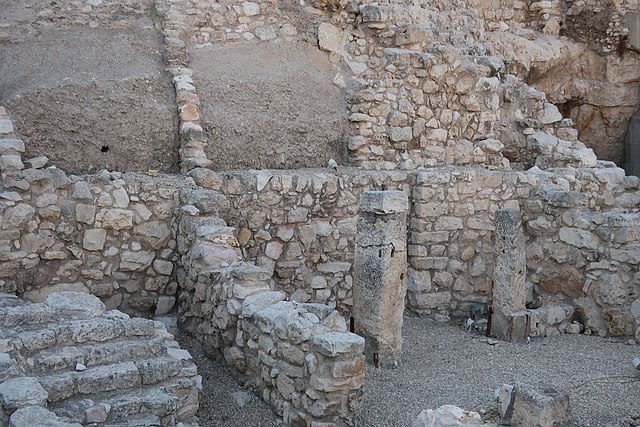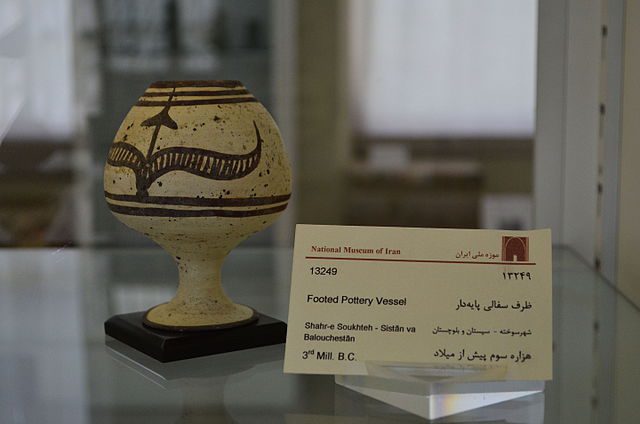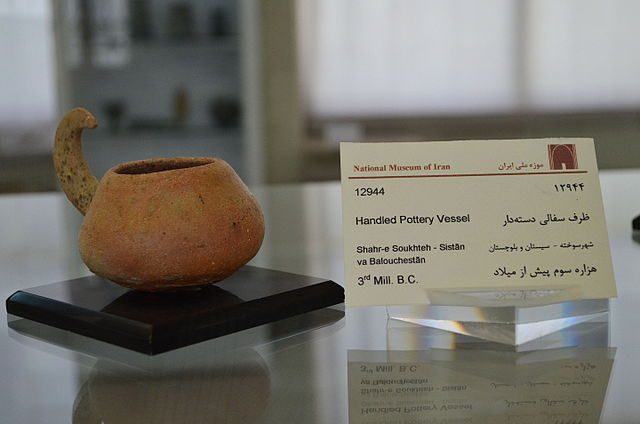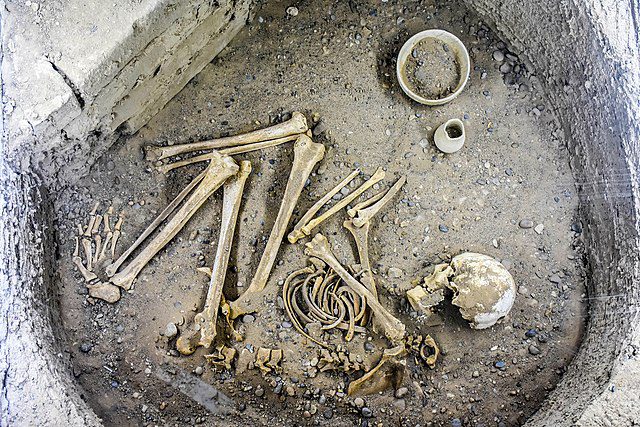Table of Contents
Burnt City in Iran or Shahr-i Shukhta
The Burnt City in Iran or Shahr-i Shukhta in Sistan is located next to the Helmand River and at the highest northwestern edge of the old delta, whose existence in the fourth and third millennia BC is due to the Helmand River. This ancient city holds secrets of how simple village life transformed into busy city living.
On its grounds, we find evidence of a bustling marketplace where skilled hands crafted metal tools, decorations, and everyday items. These treasures, made in workshops, reveal the city’s talent. Shahr-e-Sukhteh also tells a story of progress in farming and animal care. It’s like peeking through time’s window, seeing how our ancestors lived, worked, and grew, all in the heart of this ancient city.
Shahr-i Shukhta History
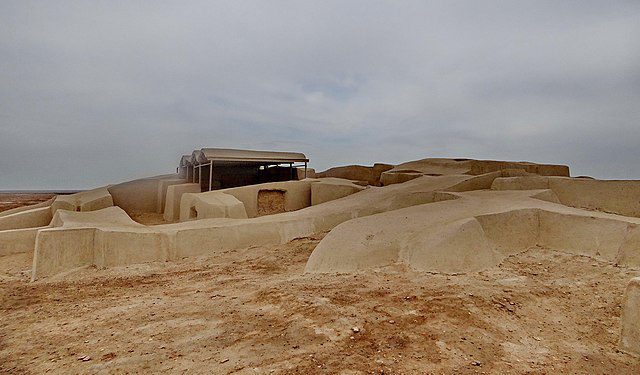
5000 years ago, on the banks of the Helmand River, Shahr-i Shukhta bloomed into life. Divided into different areas like homes, markets, and sacred sites, Shahr-i Shukhta history buzzed with activity until about 1800 B.C. Its golden age, around 2500 to 2200 B.C., saw a flourishing community crafting, trading, and living in harmony. Today, its silent ruins whisper tales of an extraordinary past, inviting us to step back in time and marvel at the resilience of humanity.
Shahr-i Shukhta isn’t just ancient stones; it’s a treasure trove of human innovation. Artifacts found here, from intricate pottery to tools, offer a glimpse into the daily lives of our ancestors. In these remnants, we find echoes of an industrious society, teaching us about ancient trades, customs, and perhaps even dreams.
Exploring Burnt City in Iran is not just touching history; it is touching the very essence of what it means to be human, reminding us that our pursuit of knowledge and community is an enduring legacy woven into the fabric of time.
Shahr-i Sokhta Facts
The ancient city of Shahr-i Sokhta, also known as the Burnt City, is over 5,000 years old and is a popular destination for tourists in Iran. It’s located in eastern Iran, near Zabol, and was built along the Helmand River and Lake Hamoon. The city has provided valuable information about various fields like archaeology, sociology, trade, and more. Scientists have found ancient surgical tools, fabrics, mosaics, and even the oldest traces of spices like cumin and coriander at this site.
Covering an area of 120 hectares, the Burnt City was most significant between 2500 and 2800 BC, expanding from a small town to one of the largest bronze cities in the Middle East. In ancient times, the region was lush with diverse vegetation, including willow, maple, and poplar trees. Lake Hamoon, fed by rivers like Helmand, was once a vast water body sustaining the city’s farms.
This archaeological site is highly significant, listed as the 17th historical monument of Iran by UNESCO. It provides a glimpse into a sophisticated ancient civilization that thrived for thousands of years.
Different Parts of Burnt City in Iran
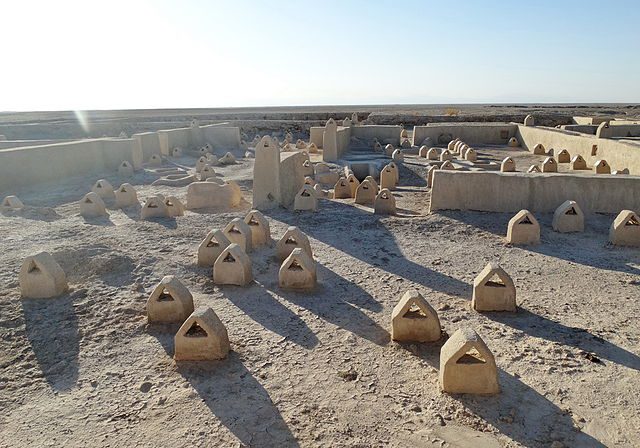
According to archaeologists, Burnt City in Iran covers an area of about 151 hectares. Remains of that huge, magnificent, and old city show that the Shahr-i Sokhta consists of 5 separate parts. These 5 separate parts are the Residential section, Central sections, Industrial Zone, Monuments, and cemetery.
The residential part is located in the northeastern part of the Shahr-e Sukhteh. These 5 parts are located like consecutive hills. Also, out of 151 hectares of this city, equivalent to 80 hectares, it was a residential part. Excavations in the burnt city found regular alleys and houses with water and sewage piping. These pipes were made of pottery and show a kind of urban planning and having advanced facilities and equipment.
About 310 graves have been discovered in this area. These 310 graves were discovered during excavations between 1997 and 2004.
Archaeologists claim that some residents of the Shahr-I Sokhta were buried in shrouded clothing and cloth. Also, in some of the graves discovered in this cemetery, traces of cloth can be seen on the surface of the bodies of the dead. These fabrics are found in three different forms in graves, which are:
1. In the form of a shroud, in this type, the dead are wrapped in a shroud.
2. In the form of clothes, which place the fabrics in the form of underlays and covers.
3. In the following form, in this type of floor, the grave is covered with cloth, and the dead person is placed in it with clothes.
Another feature of the burials in the Shahr-I Sukhteh cemetery is the presence of pottery inside the graves. It can be said that pottery objects can be seen in almost all the graves of this cemetery. There are also other gifts made of stone, wood, or cloth along with pottery.
In addition to the fact that in the past, Shahr-I Sokhta was known as the agricultural center of that region, it was also the center of many industrial and artistic activities.
It might be interesting to know that very beautiful and eye-catching examples of jewelry have been found in this ancient city. Residents of the city also used tree wood to provide the fuel they needed, both for large pottery workshops and for jewelry-making workshops.
Important Discoveries of Bunt City in Iran
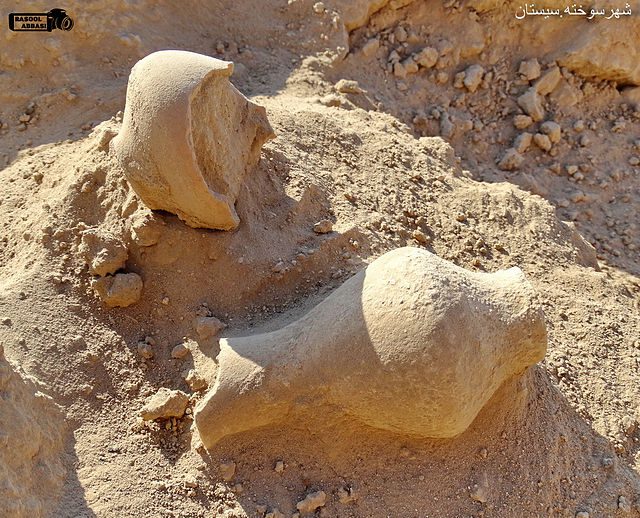
Discovery of the world’s first artificial eye in Shahr-i Sukhteh
For the first time in Shahr-I Sokhta, an artificial eye with a history of 4,800 years was discovered. This artificial eye belongs to a 25 to 30-year-old woman who was buried in one of the burnt city graves and was placed on her skull. The artificial eye found in the woman’s left eye was implanted and still survives over time.
The material of this artificial eye has not been fully determined, but it seems that it was made of natural bitumen mixed with a kind of animal fat.
Preliminary studies show that this eye belonged to the left eye of a burly woman buried in grave number 6,705 and most likely, this woman was between 25 and 30 years old and was mixed-race (black and white). Pottery, decorative seals, a leather bag, and a bronze mirror were also found in the tomb.
Discovery of the world’s first brain surgery in Shahr-I Sokhta
One of the most amazing finds of this ancient city is the discovery of the signs of the oldest brain surgery. A skull of a 12- or 13-year-old girl has been discovered in this ancient city.
4,800 years ago, doctors in the area removed part of her skull bone and operated on her to treat hydrocephalus and this girl survived long after this operation. The complete skeleton of this little girl has been found and her face has been reconstructed by paleontologists.
Discovery of a 5,000-year-old ruler in Shahr-I Sokhta
A ruler made of ebony wood has been discovered in the archeological excavations of the burnt city. This ruler is 10 cm long with an accuracy of half a millimeter made of ebony; The discovery of this device indicates that the inhabitants of this ancient city have made great strides in the field of mathematics.
Discover the world’s oldest backgammon in Shahr-e Sukhteh
The oldest backgammon in the world has been found from the ancient tomb Number 761 in the burnt city with 60 beads. This backgammon is much older than the backgammon found in the royal cemetery of Ur in Mesopotamia.
This backgammon is made of ebony and is rectangular in shape and has a snake engraved around it 20 times and holding its tail in its mouth. This backgammon has 20 game houses and 60 beads, and the beads, which were placed in an earthenware dish next to the backgammon, are made of the common stones of Shahr-I Sokhta, namely azure, agate and turquoise.
Discover the world’s first animation in Shahr-I Sokhta
Archaeologists excavated a 5,000-year-old tomb and found a cup with the image of a goat and a tree on it. It has a purposeful repetition, showing the movement of a goat towards a tree. By bringing these images closer together, archaeologists were able to obtain a sample of a moving image in the form of a 20-second film. The goat is one of the animals that is skilled in reaching heights, and the painter of Shahr-I sokhta managed to depict the jump of this goat with precision and dexterity.
This cup, which was used for drinking, is 10 cm high and is based on a pedestal. In many dishes, there are shapes that are just repetitions and there is no movement in them, but our research has shown that this role is the oldest idea of the ancient people to present a “moving image” and in today’s interpretation of “animation”.
Shahr-e Sukhteh Bowl
Imagine a 5200-year-old pottery bowl from Shahr-e Sukhteh, an ancient site, holding a fascinating discovery – possibly the world’s oldest animation. On Shahr-e Sukhteh bowl, there are five pictures of a wild goat leaping. When you flip through them quickly, like a flip book, the goat seems to come to life, jumping to munch on leaves from a tree.
It’s a remarkable find, showing how people long ago were fascinated with capturing movement and telling stories in creative ways, a tradition that has lasted for thousands of years.
Other objects of the Shahr-I Sokhta
Other important objects found among the thousands of objects include pottery with the potter’s signature on it, hammers, needles, hairpins, residential towns, and public buildings such as apartments, melon seeds, beans, dried fish, Rice, cumin, pottery kilns, metal smelting furnaces, buttons, ax, shoelaces, hooks, combs, ropes, baskets, wooden frames, shoes, and belts.
Burnt City in Iran is one of the most unique and spectacular relics of the glorious era of ancient Iran. For this reason, those tourists who are interested in the history of ancient Iran or people who love ancient studies will enjoy a trip to this ancient city more than any other trip and destination. Since this magnificent site is not on the Iran Classic Route, therefore in case you are interested in visiting this historic site, just give us a call or simply fill out the form below and create your own desired tour to Iran.
How to Get to Burnt City in Iran
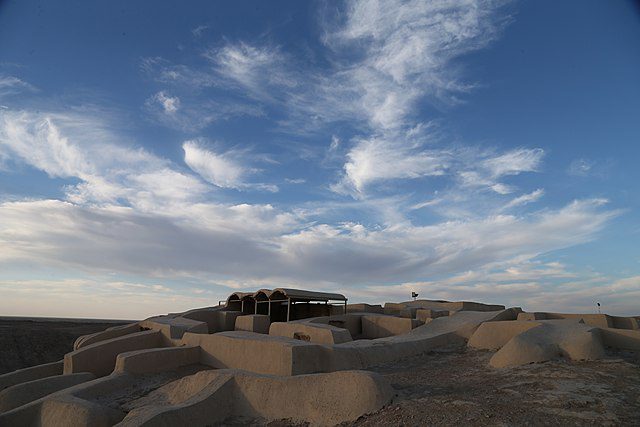
Arriving at Shahr-i Sukhteh is convenient, ensuring your journey is as smooth as possible.
If you prefer the freedom of the open road, take a car from Zabol towards Zahedan; Shahr-e-Sukhteh is just 57 km away. The scenic drive adds to the adventure, allowing you to soak in the surroundings before reaching this archaeological wonder.
Alternatively, if you’re traveling from Tehran, you can opt for a quicker route. Catch a flight to Zabol or Zahedan and then embark on a short drive to Shahr-e-Sukhteh. This way, you can combine the thrill of air travel with the ease of a brief road trip, making your exploration of this ancient site even more accessible. Safe travels!
Recommended Sightseeing Time of Burnt City in Iran
Shahr-e-Sukhteh, nestled in a desert, can be harsh in summer. But don’t worry, the best time to explore is from October to March when it’s cooler. Imagine walking among ancient ruins under a gentle winter sun or amid falling leaves in autumn.
You can visit between 8 A.M and 7 P.M, making it a perfect historical getaway during these months. So, plan your trip and uncover the secrets of Shahr-e-Sukhteh in the pleasant seasons!
Where to Eat near Burnt City in Iran
After exploring the ancient wonders of Shahr-i Sukhteh, your taste buds are in for a treat in nearby Zabol. There, you have a variety of dining spots to choose from. Aram Hotel’s Restaurant offers delicious local dishes that reflect the region’s history. Laleh Nimrooz Hotel’s Restaurant and Pasargad Restaurant also serve up mouthwatering meals, blending tradition with innovation.
In Zahedan, Berasan restaurant is a must-visit for a taste of authentic local cuisine. If you’re craving fast food, Blue Star Pizza and Shab Pizza won’t disappoint. For a truly genuine experience, Sobhan Restaurant and Haj Ahmad Restaurant in Zahedan serve up delightful local flavors.
Each restaurant near Burnt City not only offers a taste of Iranian Cuisine but also adds a flavorful chapter to your historical journey.
Where to Stay near Burnt City in Iran
In Sistan and Baluchistan province, expect some distance between attractions and places to stay. The closest city to Shahr-i Sukhteh is Zabol, just 56 kilometers away. Budget travelers can choose Aram Hotel or Laleh Nimrooz Hotel for an affordable stay.
If your travels take you to Zahedan, which is 172 kilometers away, consider Grand Esteghlal Hotel for a luxurious experience. For budget options in Zahedan, Sarboog Hostel, Amin Hotel, Saleh Hotel, and Zahedan Tourism ITTC Hotel offer comfortable stays without breaking the bank. These accommodations make great bases for exploring the province’s wonders.
Other Attractions near Burnt City in Iran
Burnt City in Iran lies just 57 kilometers south of Zabol, in the southeastern part of Iran’s Sistan and Baluchestan province. This historical treasure is not only a destination in itself but also serves as a gateway to several other intriguing sites in the area.
Dahan-e-Gholaman and Ghale Rostam
History enthusiasts can explore Dahan-e-Gholaman, an ancient site shrouded in mystery, or venture to Ghale Rostam, a fortress echoing with tales of the past.
Zabol Museum
For those curious about the region’s heritage, Zabul museum offers a fascinating glimpse into the area’s rich history.
Bazaar of Zabol
If you’re up for some local experiences, the bustling Bazaar of Zabol awaits, promising a vibrant immersion into the region’s culture and traditions.
These attractions transform your visit into an enriching exploration of Iran’s historical and cultural tapestry.
FAQs about Burnt City in Iran
Q1: What is the burned city in Iran?
A1: Shahr-i Sokhta, translated as ‘Burnt City’, is situated at the crossroads of Bronze Age trade routes on the Iranian plateau. The city’s ruins signify the rise of the earliest advanced societies in eastern Iran.
Q2: What is the history of the Burnt City?
A2: The city was established around 3200 BC and faced destruction around 2100 BC. Throughout its existence, it underwent four distinct stages of civilization and was burned down three times. This is the reason behind its name, Burnt City, known as Shahr-e Sukhteh in Persian.
Q3: How old is burned city in Iran?
A3: Shahr-i Sokhta, with over 5000 years of history, was a significant archaeological site during the Bronze Age. It served as a hub for science, industry, society, culture, and art. The site’s civilization began around 3200 BC, and archaeologists discovered evidence of four distinct phases of life there, spanning until 1800 BC.
Q4: What happens in Burnt City?
A4: The Greek army destroyed the city. Lots of people escaped, but some were taken as prisoners or slaves. The Burnt City is now a performance where actors act out rituals, mourn for their families, and feel sad about their ruined homes.
Q5: Why is it called the Burnt city?
A5: The city was constructed around 3200 BC and was destroyed around 2100 BC. It went through four stages of civilization and was burned down three times. That’s why it’s known as the Burnt City, which translates to Shahr-e Sukhteh in Persian.
Q6: What characters are found in the Shahre Sukhteh Bowl?
A6: Early art often depicted motion, and one of the oldest examples is the Shahr-E Sukhteh, a Bronze Age bowl. On the bowl, there’s a hungry goat jumping for leaves. This action is shown through a series of changing pictures arranged around the outside of the bowl.
Unlock the Mysteries of Burnt City with Customized Tours in Iran
Exploring the rich historical tapestry of Iran, especially the marvel that is Burnt City, demands more than just a casual visit; it requires an immersive experience that delves deep into the heart of ancient civilization. At To Iran Tour, we specialize in curating exceptional Iran Tours and Travel Packages, ensuring that every aspect of your journey aligns with your desires.
Embarking on a journey with To Iran Tour means embarking on an adventure where your desires shape the expedition. Allow us to be your guides, your storytellers, and your companions on this extraordinary voyage. Together, let’s explore the enchanting realms of Burnt City and beyond. Your adventure begins here.

